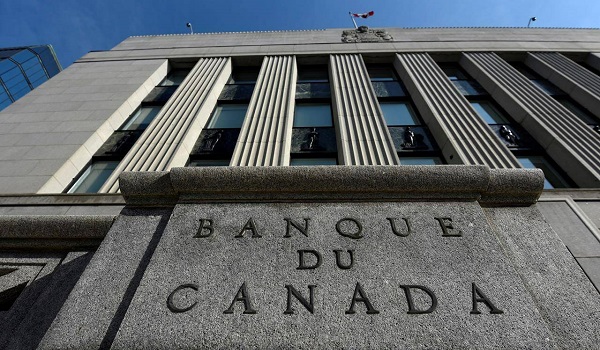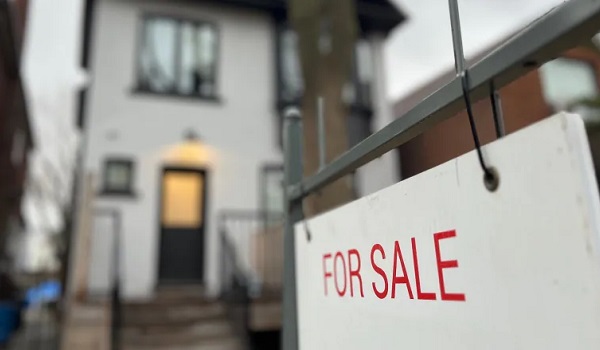Rising interest rates make the future less valuable with profound and cascading consequences: Economist
By this point, you may be a little tired of thinking about interest rates. Are more hikes coming? What are mortgage rates going to look like in a couple years? How many times did the Fed use the word “uncertainty” in its last statement? Seven?!
This past Thursday, long-term bond yields lurched higher again as U.S. inflation data for September was hotter than hoped. By now you know the script: Stocks tumbled, especially dividend payers, volatility spiked and the odds of additional rate hikes rose. Rinse and repeat.
The interest-rate conversation is sucking up a lot of oxygen in the room. For many investors, a certain amount of interest-rate fatigue has set in. Well, that’s too bad, because this is an era of financial markets with interest rates at its core.
The rise of interest rates is the “golden thread,” in the words of Ian Culley at All Star Charts. It’s the “key theme tying the major asset classes together, pulling price and all of us along with it,” the investment analyst wrote.
Investment research packages these days are peppered with charts and commentary on the relationships between bond yields and all else. From commodities to currencies to equities, everything, it seems, is attuned to the direction of interest rates.
While obsessing over interest rates is getting old, there’s little choice but to submit to the markets’ omnipresent force.
It’s worth pointing out that interest rates are rather important. While this should surprise precisely no one, rising interest rates can bear on the economy in ways that go well beyond the obvious first-order effect – making existing debt more costly to service.
“In a purely financial sense, higher interest rates make the future less valuable.” said Eric Lascelles, chief economist at RBC Global Asset Management. “That has profound and cascading consequences, not just on how much it effectively costs to buy a house.”
Now, anyone with a variable-rate mortgage can attest to profound consequences currently being wreaked on their personal finances. On the other side of that arrangement, however, is a lender collecting those higher payments.
More importantly, anyone considering an investment meant to yield future benefits must get past the impediment of higher interest rates. They make it harder to make the numbers work, since those anticipated receipts have suddenly become less valuable.
In some crucial ways, the economic effect of all those rate hikes has yet to materialize. The U.S. and Canadian labour markets are still busily putting people to work. And corporate profits and consumer spending have been far more resilient in the face of 500 basis points of rate hikes than the consensus expected.
Some economists have started to question whether interest rates have lost some of their potency. “We may be living in a world where the interest rate is less of a tool for guiding the economy than it used to be,” former U.S. treasury secretary Lawrence Summers said last week.
That idea, which is gaining traction, may simply fail to appreciate how long it takes for rate hikes to fully transmit through the economy.
Looking back on seven decades of U.S. rate-hike programs, the average time it took for a recession to emerge was 27 months from the first hike, according to RBC research. That timeline would put the start of a recession at mid-2024.
This time last year, economists were predicting with near certainty that a recession would begin within the following year. A Bloomberg Economics projection from that time put that probability at 100 per cent.
As no recession has emerged, confidence in a soft landing has grown. Maybe we can get out of this inflationary mess with the economy intact, after all. But this too may underappreciate the lags inherent in monetary policy.
There’s a case to be made, in fact, that the rate hikes we’ve already endured will take even longer to work than they usually do. Households emerged from the worst of the pandemic with historic levels of excess savings, while a great deal of corporate debt was locked in at favourable rates. In both cases, there was some protection against rising rates.
Much of the pain and cost of higher rates has simply been deferred. In his speech in Jackson Hole, Wyo., in August, Fed Chair Jerome Powell said that “there may be significantly further drag in the pipeline.” And last week, Bank of England Governor Andrew Bailey said, “it appears that there is a longer transmission, that the lags are longer.”
So, we may just have to wait for all of that tightening to do its thing. In the meantime, should investors expect any relief from rising interest rates and bond yields? It’s tempting to think they must be near their peak, with the U.S. 10-year benchmark yield having hit last week a 16-year high of more than 4.8 per cent.
It can sure feel like today’s rates and yields are historically high. They’re often described as “soaring” or “skyrocketing.” That’s because investors have been conditioned by a 40-year megatrend of declining rates. Widen the timeline and the latest rate path appears far less dramatic.
The steady climb of longer-term bond yields is tied to inflation expectations, which lately have been going in the wrong direction.
Until inflation is defeated and/or the economy buckles under the weight of the monetary pressure, high and rising interest rates will remain the markets’ golden thread.
This article was reported by The Globe and Mail
















